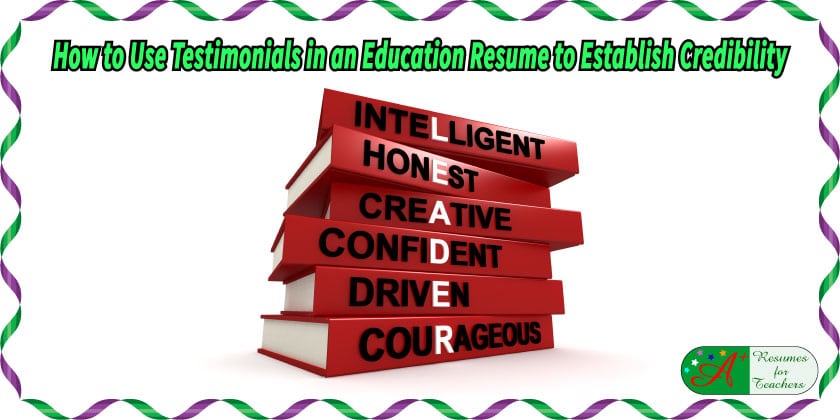Incorporating testimonials in an educational resume can grab readers’ attention by highlighting and supporting your strengths or accomplishments. When an employer writes an annual performance review, a letter of recommendation, or even a nice verbal compliment about your work, establish a file including these for future use.
These verbal statements or written documents can be powerful tools to help your teacher- or administrator-focused resume stand out from the other candidates applying for education jobs.
Draw quotes or testimonials from your letters of recommendation and incorporate one or two into your resume and cover letter. These excerpts immediately capture the reader’s attention, signalling the tangible nature of your skills and validating your worth to previous school districts or organizations.
The best places to include these quotes in a resume are either after your areas of expertise or at the end of the document. Consider incorporating one into appropriate resume sections to fill extra space. Protect them, meaning accolades sparingly (perhaps one or two per document) and do not look awkward or out of place.
A testimonial from a past employer or co-worker should be in quotation marks and italicized, followed by a dash, the person’s name, position title, and place of work (all in regular lettering), and light background shading to make the lines stand out even further. Don’t let the testimonials detract from your solid credentials and experience; instead, you want them to serve as an excellent complement to your resume.
Merge relatively up-to-date testimonials in your educational resume. It is superior to use an applicable endorsement from the past few years rather than one from 20 years ago.
If you have many different quotes, find one or two that are most relevant to the targeted position. For example, if you recently switched careers, transitioning from sales representative to teacher, find a testimonial that portrays your leadership and instructional skills.
Finally, suppose more than one individual has provided you with the material you can reference. In that case, selecting someone with a higher position or your direct supervisor may be more influential. For example, using a testimonial from a manager directly above you or a school principal is more appropriate than a co-worker who worked in a lateral position.
If you do not have testimonials but want to use a quote, you can always research something online that suits your philosophy. For instance, many teacher resumes include direct quotes from famous theorists or researchers.
Think of critical names you hear in the industry, i.e., Gardner, Bloom, Canter, etc., for education. Applying these quotes to your resume or cover letter follows the steps outlined above for incorporating testimonials (quotation marks, italicized writing, the name of the author, and background shading).
Speaking of quotes, you can review our customers’ success stories and appreciation for A+ Resumes for Teachers for helping them advance their careers.
Feel free to contact us if you need assistance gaining a competitive edge and securing a job interview for your desired position. We’ve crafted education resumes with over 20 years of experience that consistently yield positive outcomes, even amidst challenging job markets. Review our services and prices here.


